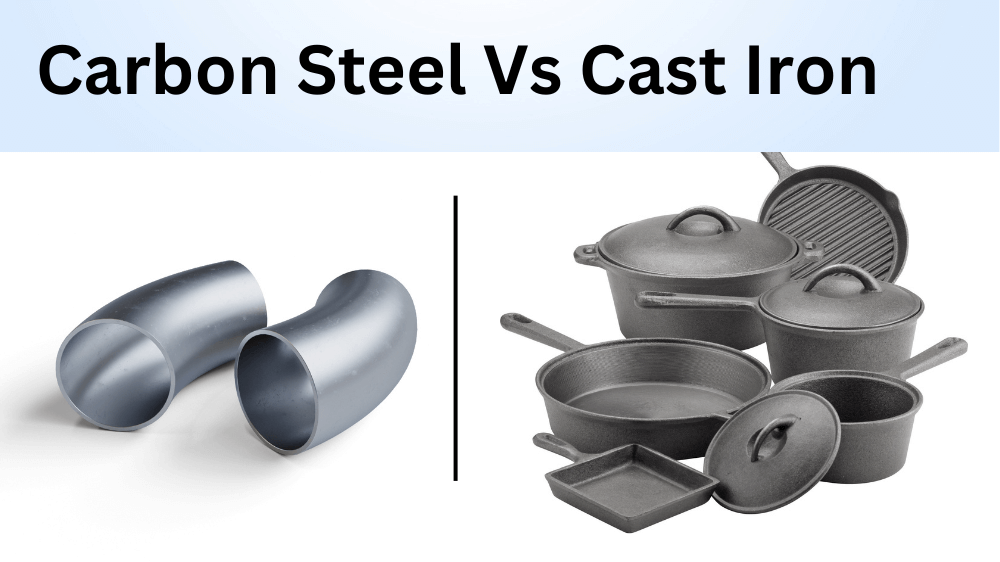Cast iron and carbon steel are two iron-based alloys that differ significantly in several ways and are suitable for different industrial and household scenarios.

Composition characteristics:
Cast iron:
Cast iron contains a higher proportion of carbon, usually between 2% and 4%. This high carbon content gives cast iron a strong ability to retain heat, but also makes it more brittle than carbon steel, so cast iron products tend to be thicker and heavier.
Carbon steel:
Carbon steel has a lower carbon content of no more than 2%, and may also contain other alloying elements to enhance performance. The lower carbon content makes carbon steel better than cast iron in hardness and toughness.
Physical properties:
Cast iron:
Cast iron conducts heat slowly, but can retain heat for a long time, suitable for cooking methods that require even and slow heating.
Carbon steel:
Carbon steel conducts heat quickly and can quickly reach the required temperature, suitable for quick cooking and occasions that require precise temperature control.
Durability and maintenance:
Cast iron:
Cast iron products are extremely durable, but require proper maintenance, such as regular oiling and cleaning, to prevent rust.
Carbon Steel:
Carbon steel is equally durable but requires more maintenance, requiring regular seasoning to create a non-stick surface and prevent rust.
Applications:
Cast Iron:
Cast iron is often used to make heavy machinery parts, building structures, and cooking utensils, such as cast iron pans, suitable for long-term high-temperature cooking.
Carbon Steel:
Carbon steel is widely used in the manufacture of knives, automotive parts, machine tools, etc. due to its hardness and wear resistance, and is suitable for occasions that need to withstand high loads.
When deciding to use cast iron or carbon steel products, the choice should be made based on the specific application needs, budget, and ease of maintenance. Each material has its own unique advantages and limitations, suitable for different environments and needs.